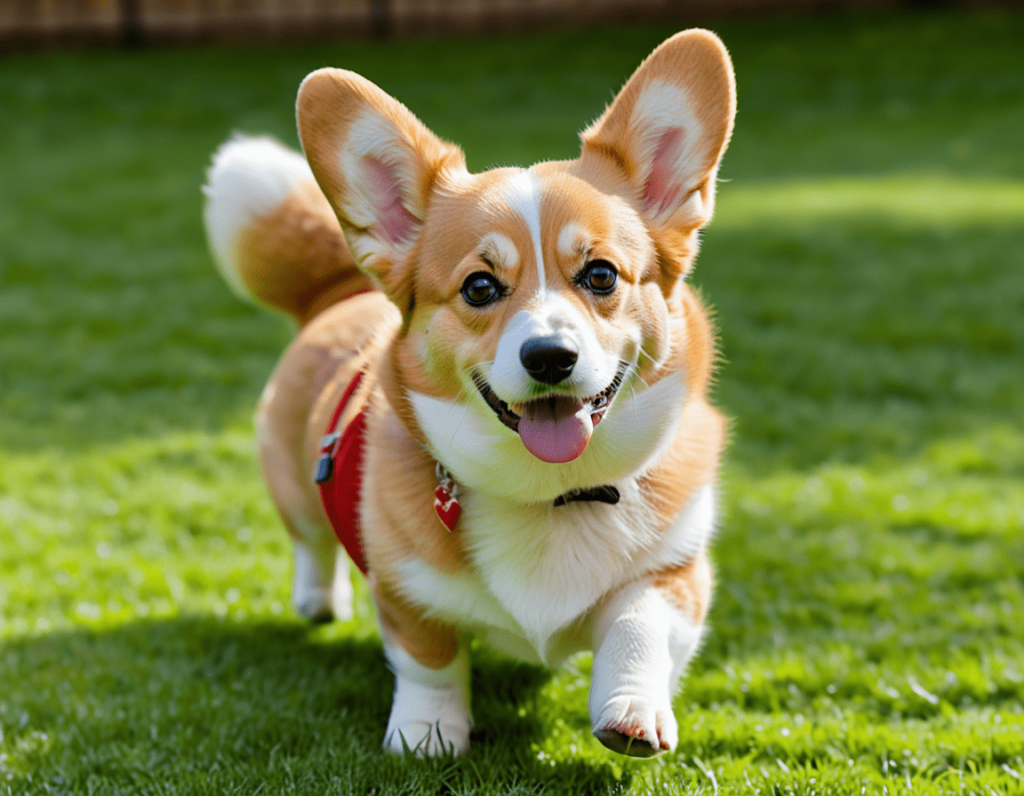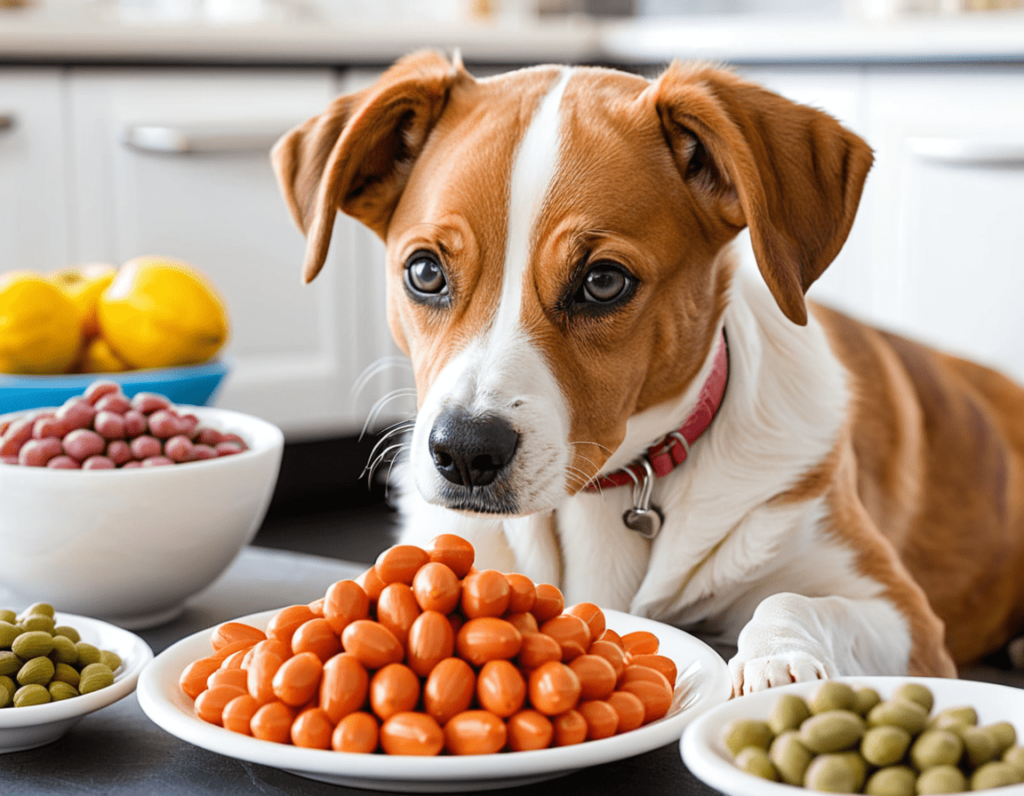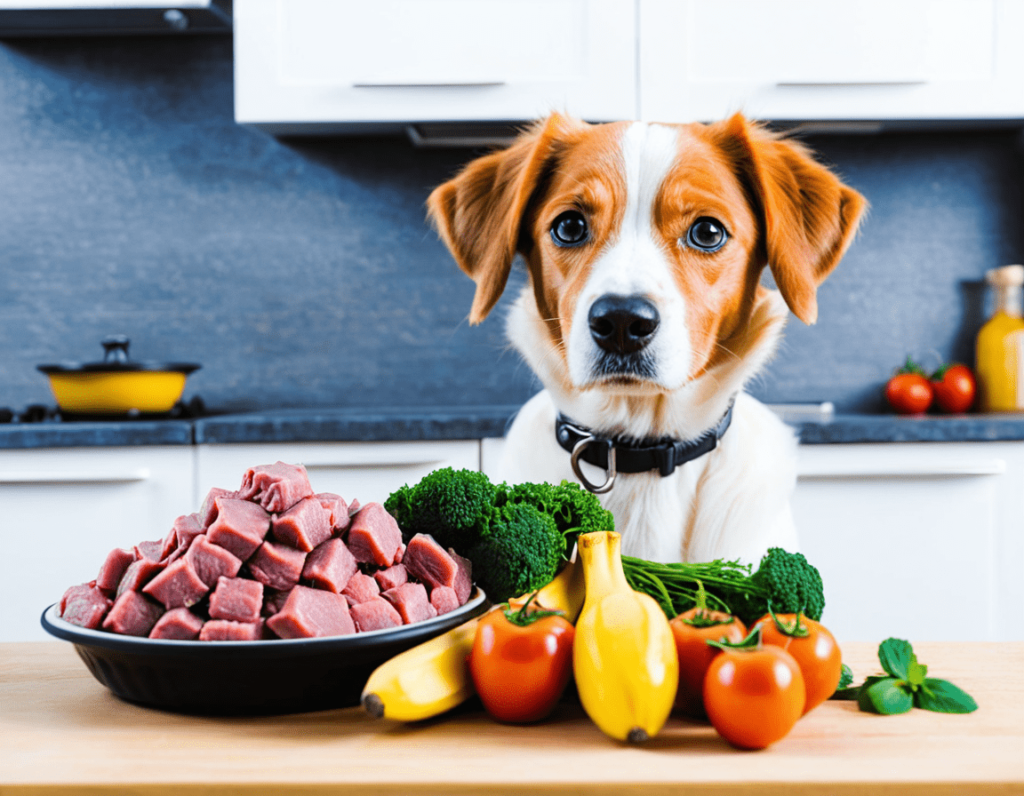
In recent years, the raw food diet for dogs has become a hot topic in the pet world. You might have heard friends rave about how their pup has transformed into a bouncy ball of energy after switching to a raw diet. Or perhaps you’ve seen the trendy hashtags on social media, showing dogs enjoying their meals like they’re at a five-star restaurant. But what’s the deal with raw food diets, and should you consider it for your furry friend? Let’s dig in!
What is a Raw Food Diet?
A raw food diet, often called a “BARF” diet (Biologically Appropriate Raw Food or Bones and Raw Food), consists of uncooked meat, bones, fruits, and vegetables. Think of it as your dog’s way of eating like their ancestors did before kibble came along. This diet aims to mimic what dogs would eat in the wild, minus the occasional game of fetch with a squirrel.
Common Components of Raw Food Diets:
- Raw Meat: This can include beef, chicken, turkey, or lamb. Your dog might feel like a mighty hunter after this meal—watch out, squirrels!
- Raw bones: Raw bones (not cooked) provide calcium and help keep your dog’s teeth clean. Just make sure they’re the right size to avoid any chomping catastrophes!
- Fruits and vegetables: Items like carrots, apples, and spinach can be added for extra vitamins and minerals. Just avoid toxic ones like grapes and onions—these are not on the “pawsitive” list!
- Organ Meats: Liver and kidneys are nutrient-rich options that dogs generally love. If only we humans could enjoy our organ meats like that!
Benefits of a Raw Food Diet
1. Improved Coat and Skin Health
Many dog owners report shinier coats and healthier skin after switching to a raw food diet. It’s like giving your dog a spa day every day, without the cucumbers on the eyes!
2. Increased Energy Levels
Raw food diets can help boost your dog’s energy levels. You might find your pup bouncing off the walls or playing fetch with a newfound enthusiasm—just be prepared to keep up!
3. Better Digestion
A raw food diet can lead to healthier digestion and less smelly poop (yes, we said it!). Many dog owners appreciate the smaller, firmer stools that can come from a raw diet. No more wishing for a gas mask during walks!
4. Weight Management
Raw diets can help maintain a healthy weight since they are usually lower in carbs and higher in protein. It’s like swapping out a doughnut for a protein bar; only your dog doesn’t even know what a doughnut is!
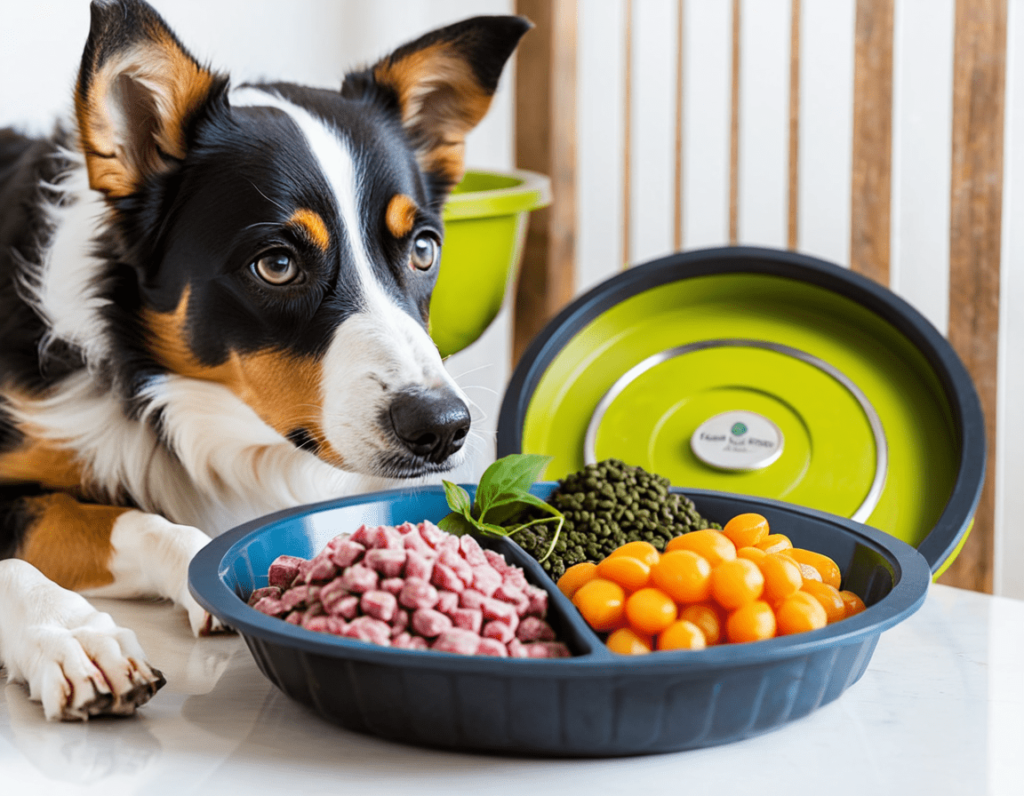
Potential Risks of a Raw Food Diet
While there are benefits, it’s important to consider some potential risks:
1. Nutritional Imbalance
Creating a balanced raw diet can be tricky. Without proper planning, your dog might miss out on essential nutrients. This is where a vet or a pet nutritionist can come in handy—like your dog’s very own dietician!
2. Bacterial Contamination
Raw meat can carry bacteria like Salmonella and E. coli, which can affect both your dog and humans in the household. It’s important to handle raw food safely and practice good hygiene—your kitchen should look like a cooking show, not a horror film!
3. Dental Concerns
While raw bones can help with dental health, not all bones are safe. Hard bones can splinter and cause choking or injury to your dog’s mouth. Choose the right bones, or else your pup might be on a soft-food diet sooner than you think!
4. Cost and Convenience
Raw diets can be more expensive and time-consuming to prepare than standard kibble. If you’re busy juggling work, family, and that new Netflix series, meal-prepping for your dog might feel like one task too many.
How to Transition Your Dog to a Raw Food Diet
If you decide to go raw, transition your dog gradually to avoid digestive upset. Here’s a simple step-by-step guide:
- Start Slow: Begin with small portions of raw food mixed with their regular kibble. You might want to introduce one protein source at a time.
- Observe: Keep an eye on your dog’s reactions. If they seem to love it and don’t have any digestive issues, you can slowly increase the raw food portions.
- Consult a Vet: Before making any major changes to your dog’s diet, consult your veterinarian to ensure you’re providing a balanced and healthy plan.
- Get Creative: Mix it up with different proteins and veggies. Your dog will appreciate the variety, and you might have fun playing chef in the kitchen!
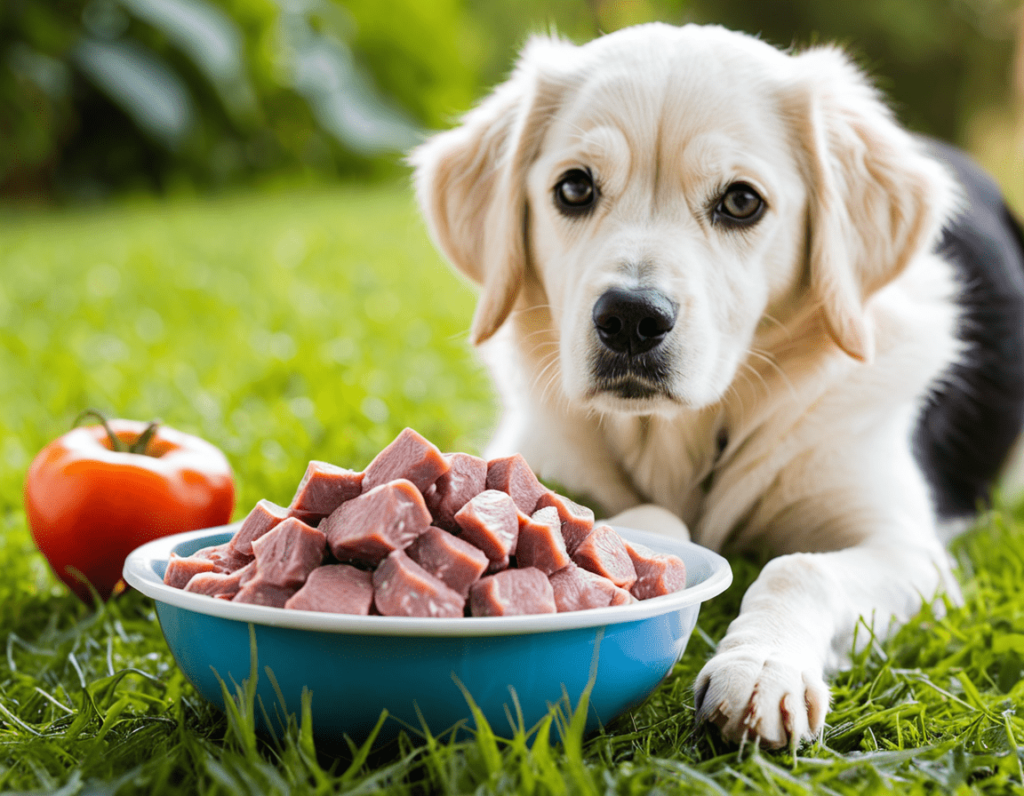
Raw Food Diets for Dogs: FAQs
1. What is a raw food diet for dogs?
A raw food diet for dogs, often called a BARF diet (Biologically Appropriate Raw Food), includes uncooked meat, bones, fruits, and vegetables. This diet aims to replicate what dogs would eat in the wild, providing natural nutrients without the processing found in commercial dog foods.
2. What are the benefits of feeding my dog a raw food diet?
Many dog owners report benefits such as improved coat condition, increased energy levels, better digestion, and healthier weight management. Dogs may also enjoy their meals more when they’re raw and fresh—because who wouldn’t want to dine like a king?
3. Are there risks associated with a raw food diet?
Yes, there are some risks. A raw food diet can lead to nutritional imbalances if not properly planned, and raw meat may carry harmful bacteria like Salmonella. Additionally, not all bones are safe; some can splinter and cause choking or injury.
4. How do I transition my dog to a raw food diet?
To transition your dog, start slowly by mixing small amounts of raw food with their regular kibble. Gradually increase the raw portion while monitoring for any digestive issues. Consulting your vet for guidance during this transition is always a good idea.
5. What types of meat can I feed my dog on a raw diet?
You can feed your dog a variety of raw meats, including chicken, beef, turkey, and lamb. It’s important to include a mix of muscle meat, organs, and bones to ensure a balanced diet.

6. Can I give my dog fruits and vegetables on a raw food diet?
Yes! Many fruits and vegetables are safe and healthy for dogs. Popular options include carrots, apples, blueberries, and spinach. However, avoid toxic foods like grapes, raisins, and onions.
7. How much raw food should I feed my dog?
The amount of raw food you should feed your dog depends on their size, age, and activity level. A general guideline is to feed 2-3% of their body weight in raw food per day, but it’s best to consult your vet for personalised recommendations.
8. Is a raw food diet suitable for all dogs?
Not all dogs may thrive on a raw food diet. Dogs with certain health conditions, those who are elderly, or those with compromised immune systems may require a different dietary approach. Always consult your veterinarian before making significant changes to your dog’s diet.
9. How do I safely handle raw dog food?
To handle raw dog food safely, wash your hands thoroughly after handling the food, clean all surfaces and utensils that come into contact with raw meat, and store raw food in the refrigerator or freezer until ready to use. Good hygiene is essential to prevent bacterial contamination.
10. Can I mix raw food with commercial dog food?
While some owners choose to mix raw food with commercial dog food, it’s crucial to ensure that the overall diet remains balanced. If you’re unsure about mixing diets, consult your vet to find the best approach for your dog.
Conclusion
Understanding raw food diets for dogs can help you make informed decisions about your pup’s nutrition. While there are potential benefits and risks, careful planning and consultation with your veterinarian can lead to a healthy, balanced diet that suits your dog’s unique needs. With the right approach, your dog can thrive and enjoy their meals like the happy hound they are!

